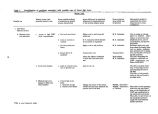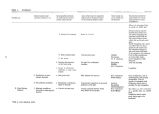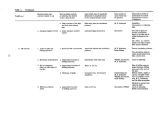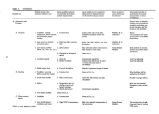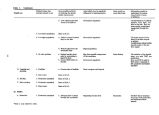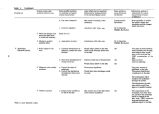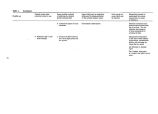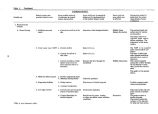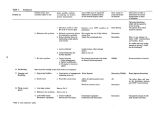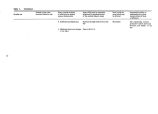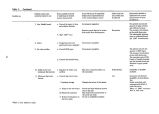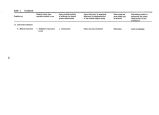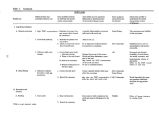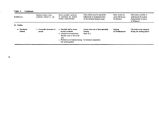| OCR Text |
Show available from the open files of the UGMS. Three reports have been published by the UGMS which analyze the chemical and physical variation of the brine from 1963 to 1973 ( Hahl and Handy, 1969; Whelan, 1973; and Whelan and Petersen, 1975). The concentration of the north arm brine is dependent on the exchange of brine through the causeway and the exchange of salt with the lake bottom. The UGMS data have shown the north arm brine to be well mixed. A salt layer which was present on the bottom of the north arm since the railroad causeway was completed had essentially redis- solved by the spring of 1976 ( UGMS, 1976). Waddell and Bolke ( 1973) and Jones et al. ( 1976) developed essentially the same equation for the re- dissolving of salt which would predict this to occur. The salinity balance for the south arm is complicated by the vertical stratification and the mixing which occurs between the two brine layers. The lower brine apparently receives the inflow from the north arm through the causeway while the surface inflows to the lake enter the upper south arm brine. Flow northward through the railroad causeway is apparently upper layer dilute brine. The future salinities of the north and south arms are dependent on the water balance for each arm, the exchange of brine through the railroad causeway, and the mixing and stability of the two south arm brine layers. Attempts have been made to predict the future salinity trends in the north and south arms of the lake. Glassett ( 1974) predicted the upper south arm brine will become more dilute each year. Waddell and Bolke ( 1973) included their equations of flow through the causeway in a preliminary water and salinity balance model of the lake. Using this model they found that the net movement of dissolved solids load through the causeway reversed under various rates of rising or falling lake stages. Jones et al. ( 1976) developed a water and salinity balance model of the lake which included Waddell and Bolke's causeway flow equations and allowed for the diffusion of salinity between the two south arm brine layers. They concluded the south arm upper brine had reached a point where the concentration varies above a fixed equilibrium. Both Waddell and Bolke ( 1973) and Jones et al. ( 1976) assumed the volume of the lower south arm brine was fixed. Glassett of Brigham Young University is presently formulating a method to predict the future chemical composition of the lake brine. Flow through the railroad causeway is essential to understanding the salinity balance for each arm of the lake. Concern was expressed during meetings for the project that the flow equations developed by Waddell and Bolke ( 1973) may not accurately represent the present flow situation. The concern may be justified since the culverts are often plugged which partially or completely restrict the flow. Large quantities of material have been added to the fill to combat high water damage which may have altered the fill flows. The USGS continues to monitor the culvert flows but data are not being gathered on the fill flows. Mixing of the two south arm brine layers and the stability of the lower brine layer are important components of the south arm salinity balance. Jones et al. ( 1976) estimated the average rate of mixing between the two layers from UGMS salinity data. Glassett is developing a model for predicting the amount of diffusion and mixing between the two brine layers. Understanding the mechanisms which cause the south arm to be stratified and the forces which produce mixing of the two layers is important to predicting future salinity trends of the lake and, thus, the proper management of the lake. Understanding the origin of the lower south arm brine layer and why it persists would lead to an understanding of how changing the present system would affect the stratification of the south arm or perhaps cause the north arm to stratify. The forces which cause mixing between the two layers must be understood to properly predict the consequences of altering the physical system. The mixing processes, which may be created by winds across the surface of the lake or turnulence created by the lake circulation, determine the salinity transport between the two layers under present or altered conditions. Proposed solutions to the present high water problem provide good examples of why we must have an understanding of the hydro- logic systems and an ability to predict the consequences of altering the present system. Two proposals, pumping brine to the west desert and breaching the causeway, could change the characteristics of the present physical system. Pumping a large quantity of brine to the west desert would be designed to reduce the volume of the south arm but in turn would, to some extent, change the water and salinity balance. However, the major impact on the salinity balance would probably be created by the return of the concentrated brine to the lake from the desert. Two factors must be considered in returning the brine to the lake; first, would the return brine mix with the lake brine or stratify, and second, what would be the effect on the salinity balance of returning the brine to the north or south arm. Consideration of both of these factors requires an understanding of the physical system advanced enough so that the effects on the |


















